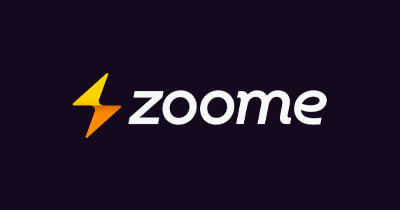Let’s get something clear from the start: just because you’re on a budget doesn’t mean your website has to look like it was built in 1998 during someone’s lunch break. But in a city like Charlotte, where the tech scene is booming and everyone from realtors to barbecue joints wants a pixel-perfect digital presence, the concept of budget web design gets tossed around like free samples at a Saturday farmers market.
So what exactly does “budget” mean? Is it a dollar amount? A mindset? A shortcut? And how do you make smart decisions without ending up with a website that makes people immediately click the back button?
I’ve worked in web design in Charlotte for years, and I’ve seen every kind of budget: the generous, the reasonable, the delusional, and the “my cousin said he could build it for free.” This article is for the business owners, nonprofit leaders, and startup founders who are serious about their web presence but don’t want to go broke in the process.
Let’s talk about what you’re paying for, where you can cut corners (safely), and where shortcuts turn into regrets.
When “Affordable” Becomes “Regrettable”
We’ve all seen the ads: “Get a stunning website for $99!” or “AI builds your site in 60 seconds!” Sounds tempting—like fast food after a long day. But just like a drive-thru burger, what you gain in convenience, you often lose in nutrition (or, in this case, performance and customization).
A common misconception about web design in Charlotte is that more money always equals better results. While there’s truth to the idea that high-end agencies can deliver stunning work, it’s also true that many overpriced providers sell cookie-cutter solutions dressed in premium packaging.
On the other hand, bargain-bin developers often overlook key fundamentals, including responsive design, SEO basics, accessibility, and page speed optimization. Your budget site might look okay on a desktop but collapse like a flan in a cupboard on mobile.
What you’re really buying isn’t just a design—it’s process, strategy, and support.
The Budget Equation: Time, Quality, and Scope
There’s a classic triangle in the design world: Fast. Cheap. Good. Pick any two. If your project must be cheap and fast, then “good” takes a backseat. If you want it to be reasonable and affordable, prepare to wait a while. And if you want quick and good… well, start saving now.
Here’s a simplified breakdown of where budget decisions make the most significant impact:
| Area | Cheap Option | Premium Option |
| Design Aesthetic | Template-based, minimal customization | Custom UI/UX from scratch |
| Functionality | Basic forms, static pages | Dynamic integrations, custom plugins |
| Performance | Shared hosting, bloated themes | VPS or dedicated, optimized code |
| SEO | No metadata, poor mobile UX | Technical SEO + keyword planning |
| Support & Updates | Email-only, slow replies | Ongoing support, dev team access |
If you think of your website like a building, then a cheap build might be fine for a temporary pop-up shop—but not for a full-service restaurant. It’s not just what it looks like from the outside—it’s the plumbing, electrical wiring, and foundation that matter.
Where You Can Save (Without Shooting Yourself in the Footer)
Not every line item needs to break the bank. There are numerous areas where a savvy business owner in Charlotte can save a few dollars without sacrificing long-term performance.
Here’s where you can often cut costs safely:
- Photography – Stock photos (yes, even the free ones) have come a long way. Just avoid anything with a guy in a suit laughing at a salad.
- Fonts and Icons – Google Fonts and free icon libraries, such as Font Awesome, are sufficient for most local businesses.
- Content Entry – If you’re comfortable with WordPress or other CMS tools, entering your content can cut down dev time.
- Page Builders (with caution) – Tools like Elementor or WP Bakery can be practical when handled by a professional, though they can become bloated if misused.
You’d be surprised how often web design in Charlotte is held back not by the actual budget, but by unclear expectations. Clients sometimes want champagne features on a soda budget, but they’ve never outlined what they genuinely need the site to do.
Clarity is free. Use it liberally.
What Clients Think They Want (vs. What They Need)

If I had a nickel for every time someone asked for a carousel, I could retire and start a goat farm in the mountains of North Carolina. The problem is, most clients aren’t web strategists. They ask for what they’ve seen—animations, sliders, flashy contact forms—without considering whether it fits their goals.
Let’s break this down with a quick example:
A restaurant owner might request a large video banner featuring sizzling steaks. It looks calm, sure, but it slows down the site, doesn’t load on all devices, and doesn’t help anyone find the menu.
The better investment? A mobile-friendly menu, a clear address, a clickable phone number, and an integration with Google Reviews.
Design is not about bells and whistles. It’s about clarity, intention, and results.
Budget Builds That Work (And Ones That Don’t)
I’ve seen some fantastic low-cost builds come to life when the client was focused, collaborative, and open to expert advice. And I’ve seen nightmares—sites stuck in limbo for months because someone decided their nephew could “figure it out on the weekends.”
You can have a great-looking, well-functioning website on a tight budget. But here’s the kicker: you can’t have everything for nothing.
Clients who invest in web design in Charlotte and trust their team—whether an agency or freelance developer—tend to get the best results, even on lean budgets. Why? Because collaboration matters more than raw dollars.
That’s where professionals at abovebits.com come in handy. Our team doesn’t just build sites—we partner with you to understand what your business needs. Whether you’re a startup with scrappy ambitions or an established firm with smart budget constraints, we guide you with practical, transparent solutions.
Is a $500 Website Ever Worth It?
Let’s address the elephant in the room: the infamous $500 website. Can it work? Technically, yes. But here’s what usually happens:
- You receive a generic template with minimal customization options.
- The site lacks proper SEO structure or mobile responsiveness.
- Support ends once the build is “done”—good luck fixing bugs or updating content.
It’s like buying a bicycle at a flea market and expecting it to win the Tour de France. If all you need is an online business card, it might work for a while. But if you plan to grow, rank on Google, or process orders online, start thinking beyond that $500 finish line.
What Not to Cut (Even on a Tight Budget)
Think of your site like a human body: you can wear off-brand jeans, but you shouldn’t cheap out on your heart. Likewise, if your website lacks these three essentials, it’ll suffer no matter how good it looks:
- Security & Hosting – A $2/ month hosting plan may sound like a steal, but when your site’s down or hacked, it’s not so cheap anymore. A mid-tier VPS host, such as Hetzner or Contabo, offers excellent value without the high prices of GoDaddy.
- Mobile Optimization – Over 70% of users in the U.S., including those in Charlotte and the broader North Carolina area, primarily browse on their phones. If your site loads slowly or displays like a Picasso painting on mobile, users bounce.
- Clear CTAs & Structure – No matter how stunning your homepage, if visitors don’t know where to click, you’ve lost them.
Budget or not, you can’t afford to ignore these foundations.
A major complaint we hear from clients seeking better web design in Charlotte is, “We spent money, but we’re not getting leads.” That’s usually because the site was treated like a digital business card, not a conversion tool. Great design supports action. Weak design leads to silence.
SEO Isn’t Just an Add-On
One of the worst places to cut corners? Search Engine Optimization. Many low-cost developers skip SEO entirely or, worse, add fake optimization, such as stuffing keywords in white text on white backgrounds (yes, that still happens).
Without basic technical SEO baked into the build—think meta tags, alt attributes, proper heading structure, schema—you’ve got a site that Google can’t understand. If you’re in Charlotte web design, and your competitors rank higher, chances are their site’s backend is cleaner, leaner, and better structured.
Here’s a little-known truth: Proper SEO setup doesn’t have to be expensive—it just has to be done right. It’s more about knowledge and intention than raw dollars.
And if you’re relying on Facebook alone for traffic, good luck. Social platforms change algorithms faster than Charlotte changes skyline cranes.
Budget Doesn’t Mean DIY Everything
Some clients believe they can save thousands by doing things themselves—writing the copy, designing the logo, and even installing WordPress themes. But unless your hobby is learning the difference between margin and padding at midnight, that approach costs you time, reputation, and often sales.
Indeed, platforms like Wix and Squarespace are attractive. And if you’re a solo consultant or side-hustler just starting, they might get you off the ground. However, for most businesses, their limitations become apparent quickly.
To compare:
| Platform | Ease of Use | Customization | SEO Control | Scalability | Ownership |
| Wix | High | Low | Basic | Limited | You don’t own the code |
| WordPress | Moderate | High | High | Very High | Full ownership |
| Shopify | Moderate | Moderate | High | High | Partial (SaaS) |
| Custom Dev (PHP) | Low | Very High | Very High | Infinite | 100% yours |
Most experienced agencies offering web design in Charlotte know when to suggest platforms—and when to recommend walking away from them.
The Problem with Free Themes (and Why They’re Not Free)
Many budget-conscious businesses go for free WordPress themes. But here’s the catch: they often come with:
- Bloated code that slows down load times.
- Hidden backlinks to shady sites.
- Outdated plugins that open the door to security breaches.
- Zero support when things break.
And when it breaks—guess who pays to fix it? (Spoiler: You.)
A client once came to us with a “free” theme that had been customized so deeply by a third-party dev that updating it caused the entire site to implode. We rebuilt it from scratch, preserving their content, but their initial savings were long gone.
To be blunt: Free themes are great for hobbyists, not for growing businesses.
Suppose you’re in North Carolina trying to compete digitally with businesses from California, New York, or even internationally. In that case, your site needs to load fast, look polished, and be safe to use.
What We Recommend Instead
If you’ve made it this far, you probably understand that web design in Charlotte doesn’t have to be expensive, but it must be strategic.
Here’s a more innovative way to approach a budget build:
- Start with your goals, not a theme. What do you want your site to do?
- Invest in planning, wireframes, and structure. These don’t require fancy design tools but make the difference between a clunky and clean final result.
- Use open-source frameworks and platforms wisely. WordPress, Laravel, or Joomla can be excellent when implemented by professionals.
- Consider phased development. Start with core pages and expand as revenue allows.
One of our most successful projects originated from a Charlotte-based boutique, which had an initial budget of only $2,000. We built a lean site with room to grow, and they’ve now expanded to three locations, with a fully custom CRM and online ordering system.
It’s Not About Money, It’s About Mindset

A budget doesn’t define your limitations—it represents your priorities.
Web design isn’t a line item. It’s your digital handshake, your storefront, your lead generator. And in a competitive city like Charlotte, where small businesses are as fierce as the skyline is tall, cutting corners on your site is like trimming the parachute to save weight.
If you treat your website like a temporary flyer, it will perform like one. But if you treat it like a lasting asset, it can pay dividends for years.
There’s no shame in working with limited funds. But there’s every reason to be smart about where those funds go.
And if you want help navigating the chaos, the designers at abovebits.com are always here to help. We don’t do cookie-cutter. We do custom, budget-conscious, and brutally honest web design—with a smile.


/socialsamosa/media/media_files/2zHb3sGz3BcGQQrVtOoh.png)







